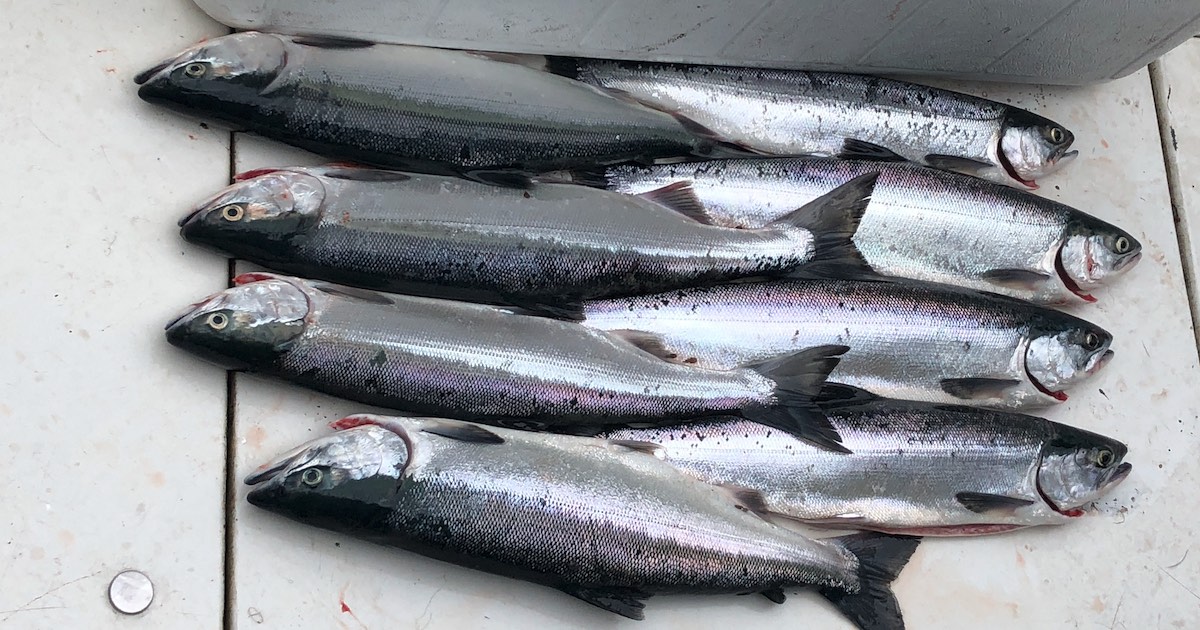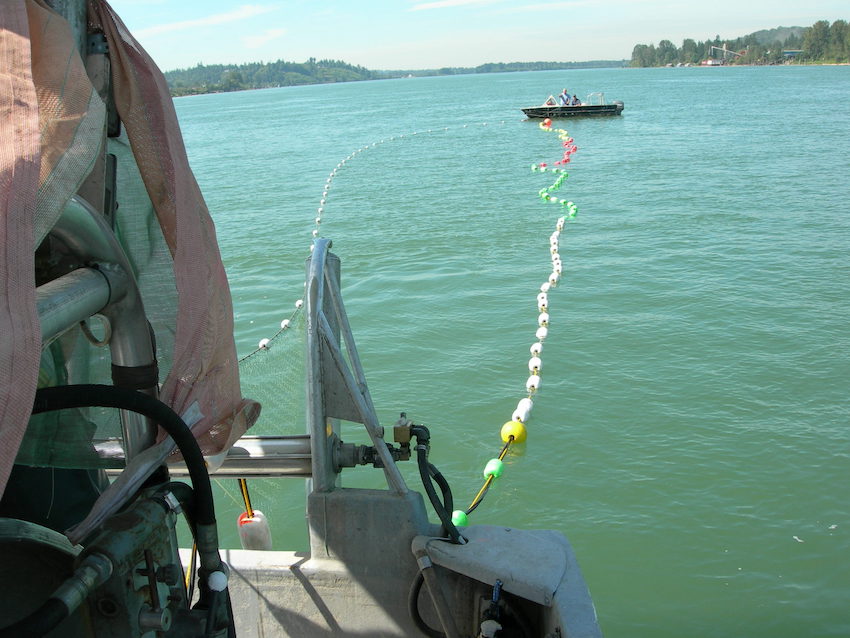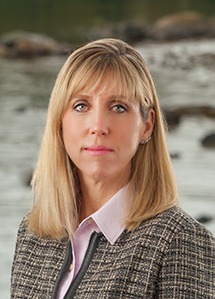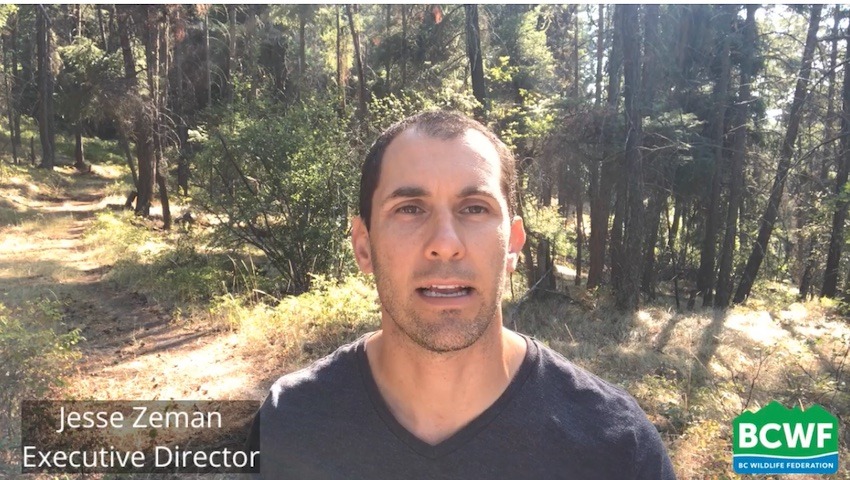
This is the question that many want answered once the last of the Fraser’s sockeye arrive on their spawning grounds. Based on early sockeye returns to the Skeena and Columbia Rivers, and the Somass near Port Alberni, there were high hopes the dominant year Fraser River return would provide adequate fishing opportunities for all users. Initially that appeared to be the case with a median Pacific Salmon Commission (PSC) Fraser sockeye forecast of 9.8 million over all run timings. Enthusiasm continued when the early Stuart run came in at double the expectation, and the early summer non-Thompson runs exceeded the pre-season forecast. However the Fraser’s summer and late runs have under-performed by a combined 3.4 million fish so far, downgrading the overall sockeye forecast to 5.994 million.

Adams River Sockeye Photo Credit: Nature Trust of BC
There is still confusion, anger, and concern about how this sockeye fishing year unfolded. What is lacking is a consensus on what happened, how some fisheries were able to fish, and why the forecasts were substantially off the mark.
Problems started when Canada opposed the PSC recommendation that supported opening early season fisheries. The US accepted the PSC recommendation and went fishing, leaving Canadian commercial fishers on the beach while the all gear US catch of Fraser fish reached 318,800 sockeye by September 2, 2022.
Consequently, the United Fishermen and Allied Workers Union (UFAWU) criticized the Canadian decision to not fish early stating, “rejecting the PSC’s recommendations confirms that Canada is ignoring clear scientific data” (Aug 19 UFAWU response to sockeye closure). Commercial fishers proposed small, short duration exploratory fisheries for troll, seine, and gillnet, but these options were rejected by DFO.

Inriver Gillnet Whonnock Test Fishery Photo Credit Pacific Salmon Commission (PSC) 2022
Conversely, the Raincoast Conservation Foundation and Watershed Watch praised Fisheries Minister Murray and her Department for rejecting Canadian openings other than First Nations food, societal and ceremonial (FSC) fisheries. They added the US should not have fished, while taking a swipe at the Pacific Salmon Commission process calling it a “stale trade agreement” (Raincoast press release Aug 23, 2022).
Recreational anglers come last in terms of priority access for sockeye after conservation, First Nations (FSC), and commercial fisheries. Sockeye, chum and pink salmon have been managed this way since the late 1990’s as a trade off for recreational fishing having priority access to Chinook and coho over commercial fisheries.
To date, limited recreational fisheries have been approved for the Nechako River, Quesnel Lake, and near Lillooet on the Fraser until September 15, 2022.
The recreational fishery has significant concerns over illegal fishing and illegal fish sales on the Fraser River. The only current legal Canadian Fraser sockeye fisheries, aside from those noted previously, are FSC fisheries. However, based on videos and numerous anecdotal reports, it appears that evidence of poaching and illegal sales is widespread on the river.

Rebecca Reid, Regional Director General—Pacific Region, DFO
Anglers believe it is DFO’s responsibility to enforce the law regardless of who is poaching. This concern is highlighted in an email by Rod Clapton, President of the BC Federation of Drift Fishers. It was sent directly to Rebecca Reid, Regional Director of Fisheries, on behalf of the Drift Fishers and five other angling and conservation organizations.
Other organizations and prominent anglers have brought the enforcement issue to the public’s attention through various media. The BC Wildlife Federation’s Jesse Zeeman released a video explaining how the public can identify illegally caught fish and how to report it to DFO.
Well known fishing personality Rod Hsu from Fishing with Rod videoed and posted another abuse showing dead sockeye salmon left to rot in the bush near the banks of the river.
This is an indicator of illegal sales activity. Anglers, at the request of three BC MP’s, are documenting evidence of illegal activities so they can be raised with the Minister of Fisheries. There is no issue with legally conducted First Nations (FSC) fisheries but illegal fishing and sales must be eliminated, something that all fishing sectors agree with.
Here are the issues:
- Loss of fishing opportunities on early Fraser runs where harvestable surpluses were available.
- Lack of effective consultation by DFO on fishing closures and potential reallocation of sockeye between sectors.
- US fisheries proceeding while Canadian fisheries stood down. However information provided by the PSC suggests the US needs to conduct early fisheries, when sockeye are in US waters, as they may have limited opportunities later if the inside diversion rate is high.
- The accuracy of pre-season forecasting and the relevance of the Pacific Salmon Commission Process have been called into question by environmentalists. Carl Walters, UBC Institute for Oceans & Fisheries, has studied Fraser River sockeye extensively. He provided this comment, “We likely will never have good stock size forecasting methods for sockeye, their life cycle is just too complex”.
- Poaching and illegal sockeye sales raise the question whether DFO has effective enforcement and quick response capabilities. Both are critical for maintaining confidence in fisheries management.
As of September 2, 2022 the total catch of Fraser River sockeye was 1.079 million (Catch to date by fishery-PSC Fraser Panel).
1) US all gear-318,800
2) Canadian First Nations FSC-709,200
3) Canadian commercial and recreational-0
4) Test fisheries in panel and non panel areas account for the small balance of the catch.
September 6, 2022 Update:
The Salmon Commission’s Fraser River Panel met September 6, 2022 and upgraded the late run sockeye estimate from 1.6 million to 1.85 million noting, “There are late run harvest opportunities being planned for commercial and recreational fisheries that will be announced in separate fishery notices.”
Is this welcome news? Probably yes. Is it too little, too late? Probably yes. These answers define the confusing nature of the 2022 Fraser River sockeye fishery.
3 Comments
Leave A Comment
Visit the Store
$34.99
$34.99
Featured Catch

Joel Unickow halibut (Photo: Rob Frawley Lucky Strike Sportfishing Tofino)









17 plus days of FN food fisheries and now Jim Pattison is allowed to gillnet 400K Sockeye at the mouth of the Fraser, yet recreational are shut down;
there’s no shortage of salmon;
Tell me there is no corruption in DFO without telling me there is no corruption;
Fact: DFO has no Title on this land and thus NO JURISDICTION;
It may be time to restrict first nation fishing also. It would be helpful to restock our salmon runs..
This is typical of our liberal government a bunch of people in places they have no idea about. And why did they give Pattision a license to catch 400k of fish who got paid off and got the liberal bonus. Should be another useless liberal inquiry.